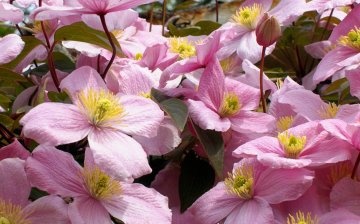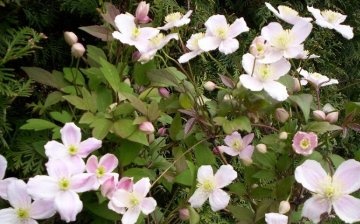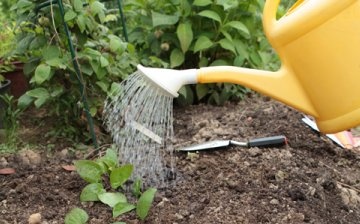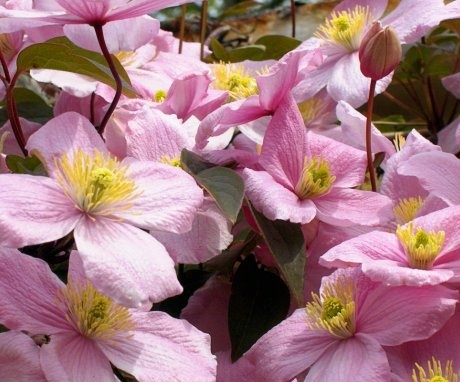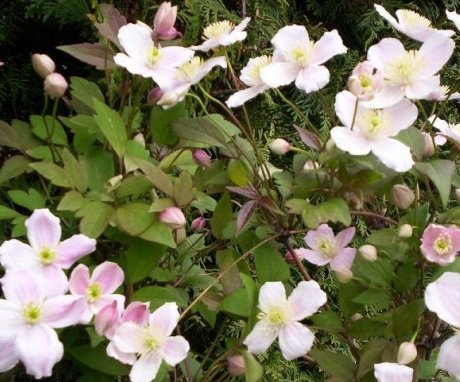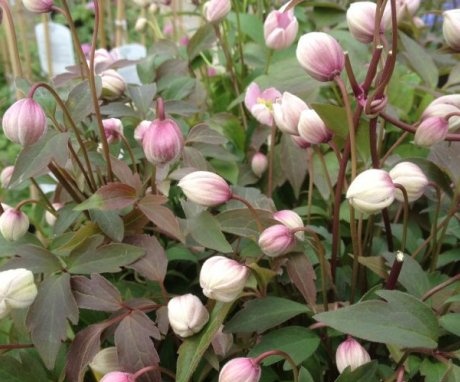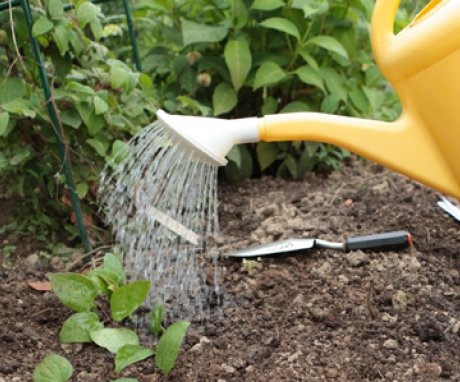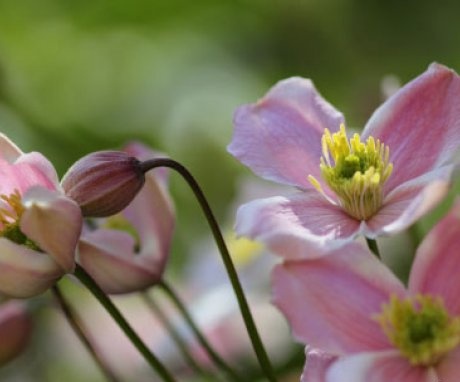What does clematis rubens look like and how to provide it with abundant and long-lasting flowering
Clematis is a popular plant that is used for landscaping balconies and exterior walls of houses, gazebos. Having chosen the type of clematis, based on the climatic characteristics of the region, it can be grown almost everywhere.
Content:
- Clematis rubens: plant description
- Variety of types and varieties of clematis
- Plant care tips
- Breeding methods
- Transplant of clematis rubens
Clematis: plant description
There are several names for this wonderful plant: clematis, clematis, willow. This is a genus of the Buttercup family. Clematis - perennial herb, some varieties are woody, in natural conditions it can be found in countries of temperate and subtropical climates.
At home, clematis is also common for growing indoors, and landscaping balconies, and ornamental gardening.
Clematis are popular among amateur and professional gardeners. The flowering period of plants lasts from June to September, all summer long flowers delight the owners and guests of the house. Some varieties are capable of producing more than a hundred flowers at the same time.
The color of clematis flowers is very diverse, they can be pink, crimson, red, burgundy, blue, purple, with or without a white edging.
Features of clematis:
- The clematis flower usually has 4 or 5 sepals, the surface is terry, the diameter of the flower can range from 3 to 25 centimeters.
- Inside each flower there is a cluster of pistils and stamens that stand out from the general background. Usually this part of the flower has a contrasting color from the petals.
- Depending on the variety, the flowers can be collected in inflorescences, or they can be located separately.
- The flower does not live from the beginning to the end of flowering, the duration of its life ranges from several days to several weeks. After that, they are replaced by others, which provides the appearance of continuous flowering.
- Clematis leaves also differ depending on the variety, they can be simple or complex, paired. The color of the leaves is either green or with a purple tint.
Some varieties of clematis are curly, so they need to provide support. up to several meters high... Such plants are used for vertical gardening.
The root system of clematis is strong. There is an overgrown and shortened main root and lateral roots. The diameter and depth of the roots can eventually reach one and a half meters.
All clematis have one thing in common: long shoots and lush blooms, small bright flowers of a similar shape.
Variety of types and varieties of clematis
In total, there are more than 300 types of clematis, each of them has its own characteristics and differences.
Herbaceous perennials:
- Manchurian.
- Texas.
- Straight.
Their shoots die off at the end of the growing season.
Semi-shrub representatives:
- Whole-leaved.
- Hogweed.
In these species, the lower part is lignified, remains unchanged for several years, and the upper one dies off every year. Shrub species of clematis have completely lignified shoots that remain to winter.
Curly species:
- Purple.
- Grape-leaved.
- Tangutsky.
Representatives of these species can curl along supports, clinging to it with leaf stalks. The largest of the climbing clematis is Zhakman's clematis, it has rather large leaves, it is considered one of the most frost-resistant.
According to another classification, clematis are divided into late spring flowering, summer and early summer flowering.
Clematis rubens is one of the most beautiful varieties in the group of low-growing perennials:
- In addition to external beauty, it has a pleasant, long-lasting aroma. The most abundant flowering occurs in May, then throughout the summer clematis also blooms, but less and less abundantly.
- The flowers of clematis rubens are very delicate, therefore, the plant must be sheltered for the winter, otherwise not all buds will endure frost and will dissolve only the next year. Do not be afraid of winter if the cultivation of clematis is planned in regions with a mild microclimate.
- The maximum height of clematis rubens is 10 meters, on average it reaches 7 meters. The flowers are medium in size, about 5-6 cm, in groups of 4-6. The shade of flowers is delicate, pink with a lilac tint. It does not need pruning, only for shaping.
- Clematis rubens has green leaves with a characteristic bronze tint. The shoots themselves are purple. The leaves are long, complex, can reach 15 cm.
For growing clematis rubens suitable conditions are necessary, namely: fertile soils, timely moderate moisture. Trimming is required periodically. Clematis does not have any special requirements for illumination.
Plant care tips
Not all types and varieties of clematis have special lighting requirements. Preference should be given to sunny places, but clematis rubens can grow in partial shade and on the north side. The main condition is the absence of drafts.
Various types of soil are suitable for growing:
- Alkaline.
- Neutral.
- With a slightly acidic reaction.
- Sandy loam.
- Loamy.
- Loose.
- Well fertilized.
Stagnant or acidic soils will have a negative impact on plant development. Groundwater should not flow close to the soil. You need to water the plant carefully, watering is the main condition for good development and lush flowering of clematis.
Watering is required abundant, especially for a young plant. After a few years, watering is reduced to 2 buckets once or twice a week, depending on weather conditions. The soil should not completely dry out, but stagnation of water is also unacceptable.
During flowering, clematis especially needs watering. In dry weather, clematis is watered more than 2 times a week.
To make clematis bloom better, the ground around it must be loosened, and remove weeds in a timely manner. The plant needs support to guide the growth of the clematis shoots. It is important that the vines do not get confused with each other.
Some types of clematis need pruning:
- If the plant is climbing, then it is pruned several times. To make the root system stronger, and the aerial part to develop more actively, the shoots are shortened immediately after planting.
- For a more abundant and long-lasting flowering, the shoots are pruned in early spring. In the summer, pruning is not done, only for the purpose regulation of the growth of vines... The last time the shoots are shortened before wintering (depending on the type of clematis and which group it belongs to).
- If the flowers of clematis are formed on last year's shoots, then pruning is done after frost, a third of the length of the shoots is eliminated, and the rest are laid on the ground and covered.
- If flowers appear on annual shoots, but in the fall they are completely cut off, leaving a couple of knots.
The shelter must be strong, but it is important to remember that oxygen must pass there, otherwise the plant will die. In spring, the shelter is removed gradually, rather than abruptly, to allow time to adapt to the sun and heat.
At the beginning of a period of active growth clematis is fertilized nitrogen fertilization, in particular urea.If the soil is acidic, then milk of lime is used. Fertilizer is applied once a week. Clematis responds well to mineral fertilizers, wood ash, mullein.
To grow clematis, you need to choose a suitable soil, a sunny side, cover the plant from drafts, water and fertilize in a timely manner.
Breeding methods
Clematis can be propagated in several ways:
- Seeds.
- Cuttings.
- By dividing the bush.
- Layers.
Not all gardeners succeed propagate plants with seeds... Clematis seeds may not germinate in the first year, some varieties may germinate after several years. Sowing seeds every 2 weeks is watered with a weakly concentrated solution of boric acid or potassium permanganate.
Using the grafting method:
- Such processes are selected on which there are 1 or 2 internodes.
- The middle part of the vine is cut off when the clematis begins to bloom. To make the cuttings take root faster, they can be placed in a heteroauxin solution for a day.
- Cuttings are placed in the ground at an angle; washed peat, sand or a mixture of peat and sand is used as soil. The temperature should be maintained within 20-25 degrees, spraying is recommended.
If all the conditions are met, then rooting will occur three months later, perhaps a little earlier.
After that, they are transplanted into separate pots with nutrient soil. When planting seedlings in winter, the temperature should not exceed 7 degrees. Flowering will occur next year.
As for the layering, young shoots are used, the length of which does not exceed 30 cm. The shoot is bent to the ground and laid in a ditch up to 10 cm deep. The internodes are pressed to the ground and covered, only the top and a few leaves remain intact. In the winter, the rooted shoot remains intact, and in the spring it can already be cut and transplanted to a permanent place.
Transplant of clematis rubens
Clematis has a hard time transferring, some species may die. Therefore, the choice of the place of growth must be approached with great responsibility.
Clematis should be planted in the summer, although the plant will also endure an autumn planting 1-1.5 months before frost. The place should be well lit, there should be no wind or drafts.
If the soil is heavy, then a hole is dug 70 cm wide and 70 cm deep, if the soil is light, then 50 cm is enough.
Peat, humus, garden soil and sand are placed in the pit, ash and mineral fertilizers can be added. The distance between plants should be more than 2 meters.
Clematis needs to be well buried so that the roots do not freeze in winter. The tillering knot is lowered into a hole 8 cm and sprinkled with sand with wood ash. It is advisable to mulch the soil using humus or peat.
A young plant can get burned from direct sunlight, so it needs to be shaded. The support is installed before planting the plant or immediately after, to avoid damage to the roots.
Clematis is susceptible to infection with such diseases:
- Gray rot.
- Brown spotting.
- Powdery mildew.
For the prevention of diseases, in autumn clematis is treated with a solution of foundationol
It is not difficult to take care of the plant, but you need to know some of the nuances, otherwise there is a risk of plant death or wilting. You especially need to be careful with liana-like representatives.
More information can be found in the video.




